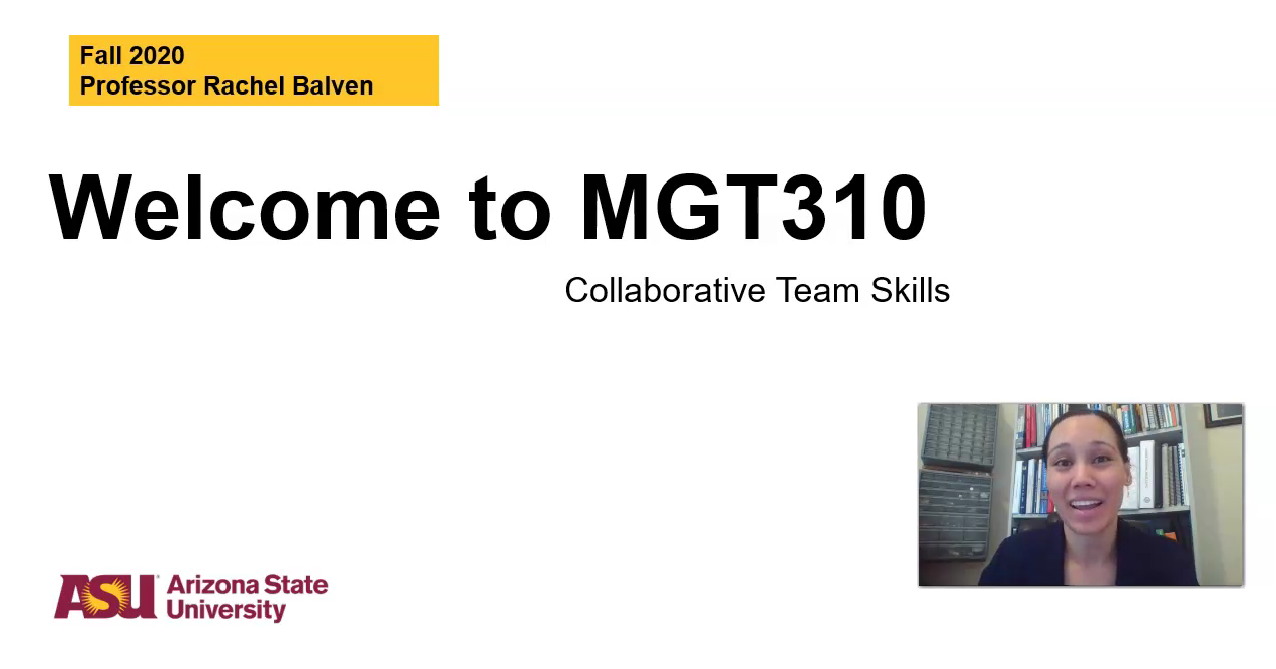Collaborative Team Skills course incorporates Slack for real-time collaboration success

When looking forward to teaching her “Collaborative Team Skills” class at the W.P. Carey School of Business, instructor Rachel Balven wondered how best to capture the in-person spirit of her previous courses. Balven fittingly turned to real-time collaboration tool Slack, and was able to get and keep her students talking and engaged in old and new ways.
Balven, who hadn’t used Slack until four months ago, was juggling the start of the fall semester while learning a new technology alongside most of her students. “It was a little difficult for me to adjust at first, because so many of the group projects we do involve in-person interaction,” she said. That interaction, experienced in a new way via Slack, was within the ASU Sync model, which saw ten of Balven’s students in the physical classroom, while 30 participated live (or synchronously) online.
The instructor began the semester by polling everyone on what messaging services they’ve used the most to help inform how the class would communicate moving forward. With only a passing familiarity with Slack, Balven decided to adopt the tool after learning it was used across numerous industries. “Slack was something to prepare them for the professional world,” she said, echoing the contents of the ASU Digital Backpack, which is full of tools to prepare students for the future of work.
In Balven’s Collaborative Team Skills class, students are grouped together for semester-long projects. In transitioning online, “group huddles” were turned into private Slack channels for each of the teams, which took off in popularity as students regularly turned to Slack for both formal and informal communication. “I’m open to communicating in more colloquial terms in Slack,” Balven said.

She further explained the shift to Slack resulted in a more open form of communication that allowed for greater collaboration, which she noted usually happened in group or one-on-one in-person settings. For example, students who had questions that could be answered by other students, or who had questions with answers that the entire class could benefit from seeing, were asked and answered in class-wide channels. “Everyone will benefit from the answers that I give,” Balven said.
That is partly because Balven essentially eschewed email in favor of Slack this semester. Working with the real-time collaboration tool reduced the number of emails she received and resulted in quicker, more effective communication. Balven’s management of her course workspace in Slack fit the skills she wanted to impart with her class, truly embodying the “Collaborative Team Skills” name.
While Balven professed to not be a Slack expert, she utilized many of the various functions available inside the tool. . For example, she implemented polls and Slackbots that automate certain tasks, like linking to the syllabus when the word is mentioned. Working with mostly juniors and seniors, Balven strongly believes their use of Slack in class will mirror the future workplace and benefit her students: “The most important impact of using Slack is from the student perspective.”She reported seeing more open communication when using Slack. “And that’s key for a collaborative class.”
Perhaps the highest compliment Balven could give to her students was that their combined use of Slack has led her to use it in all of her classes going forward, even if and/or when classes return to a more in-person format. But as has been described many times, the future will have a “new normal” in the wake of COVID-19, and Balven’s instruction showcases the shape of learning experiences to come.